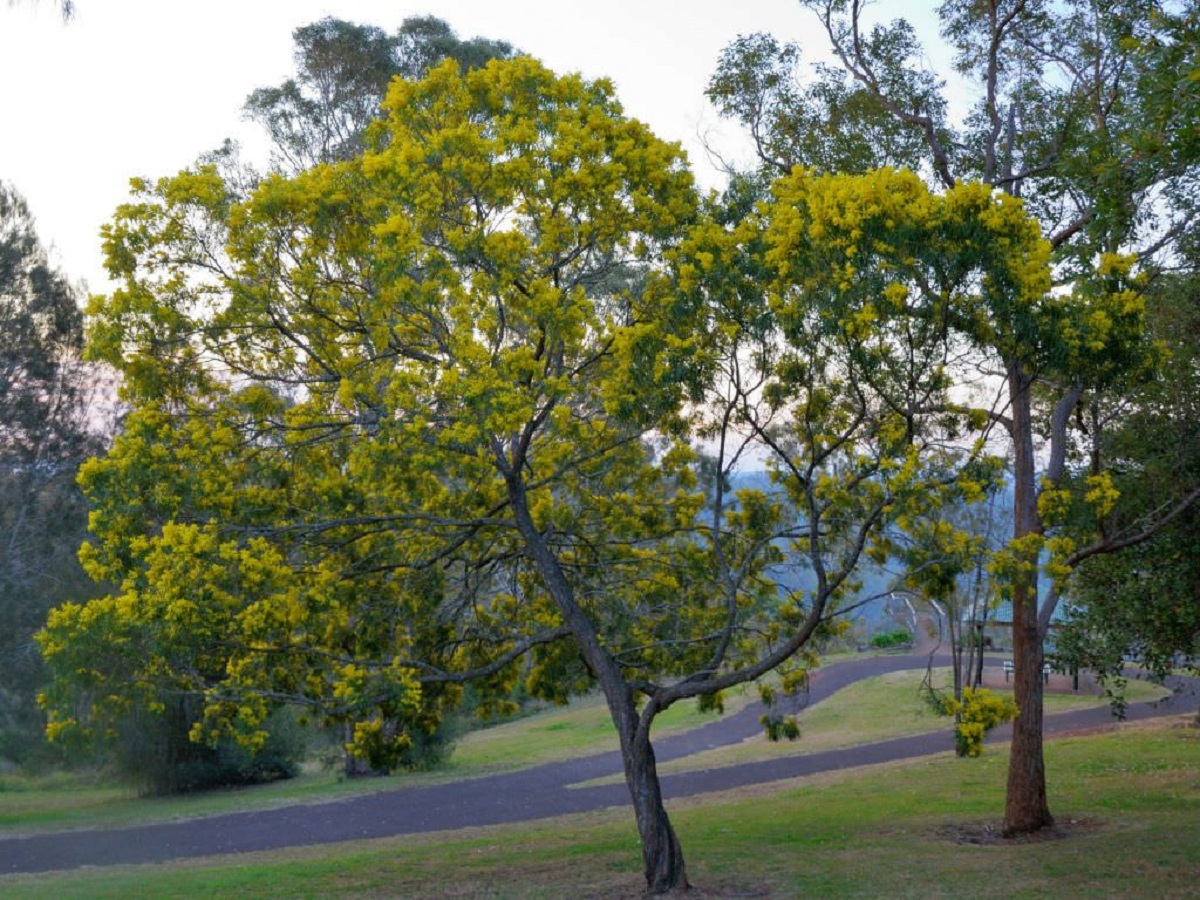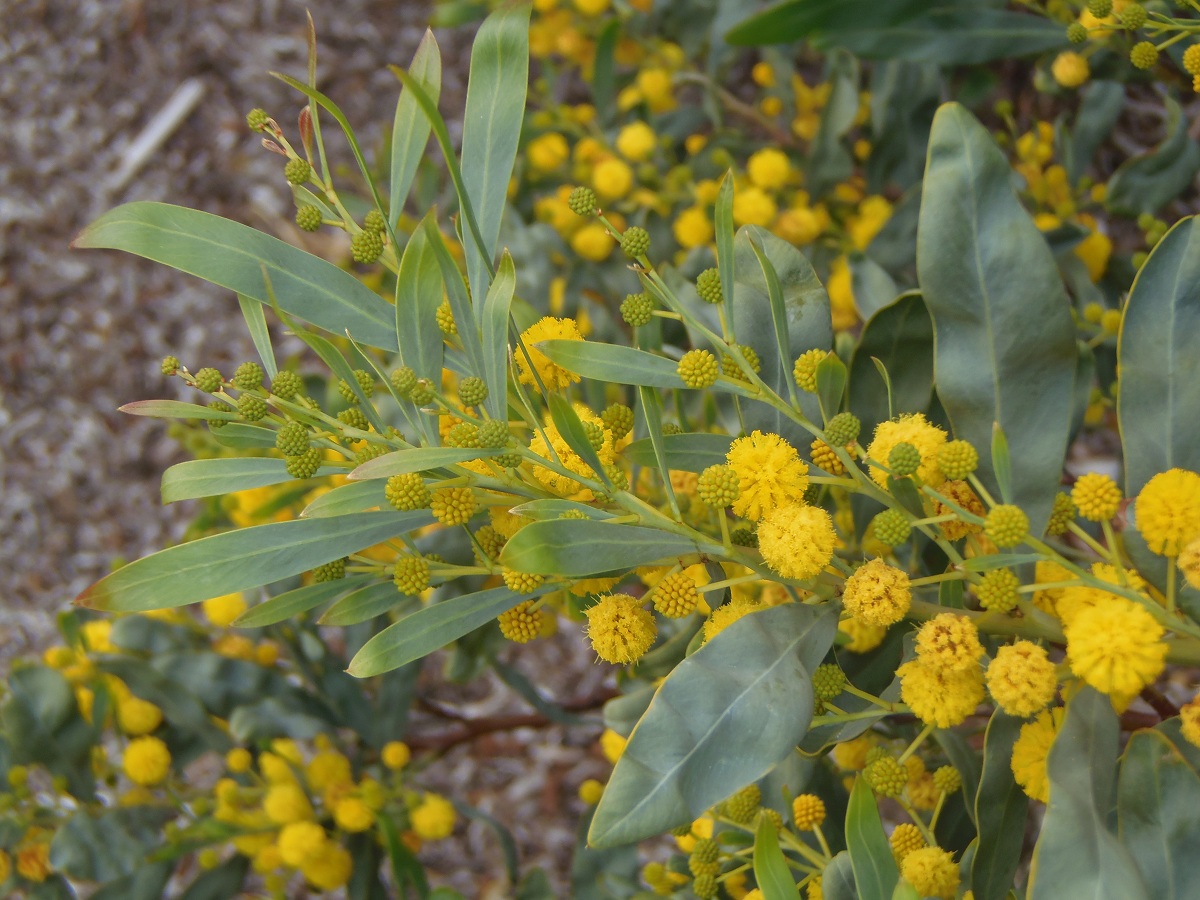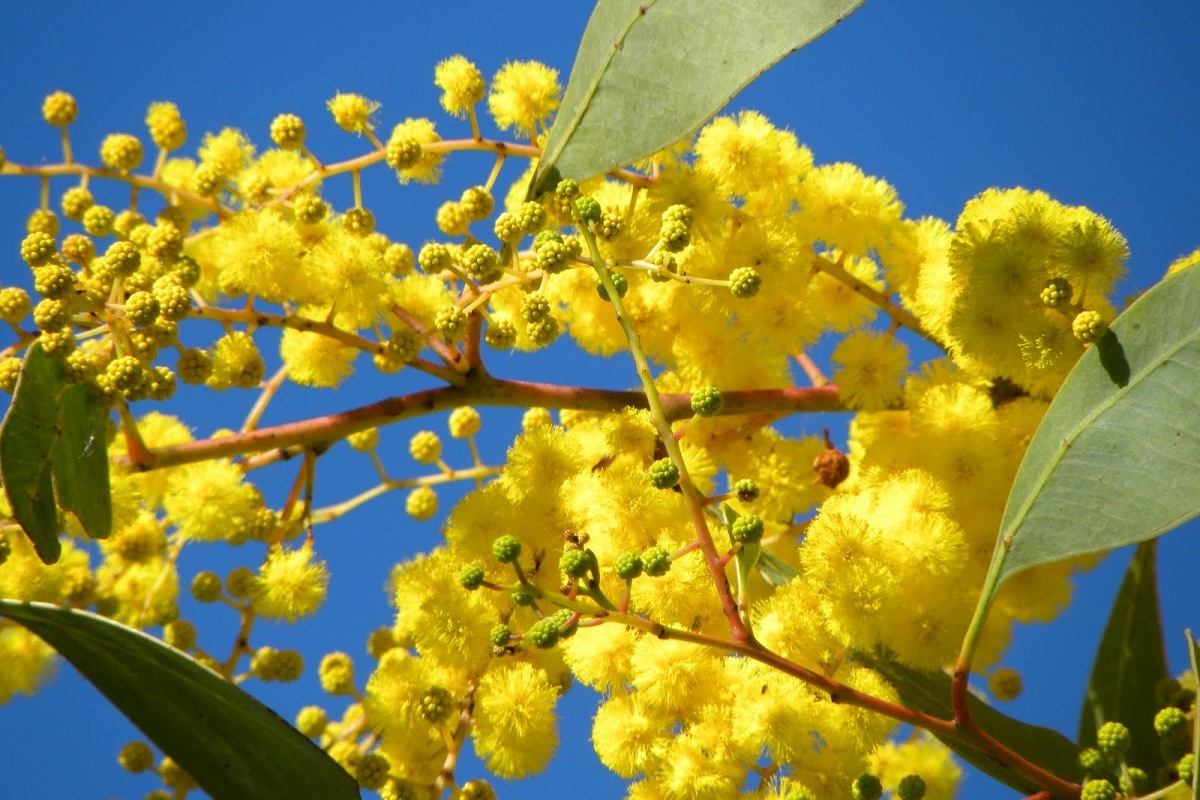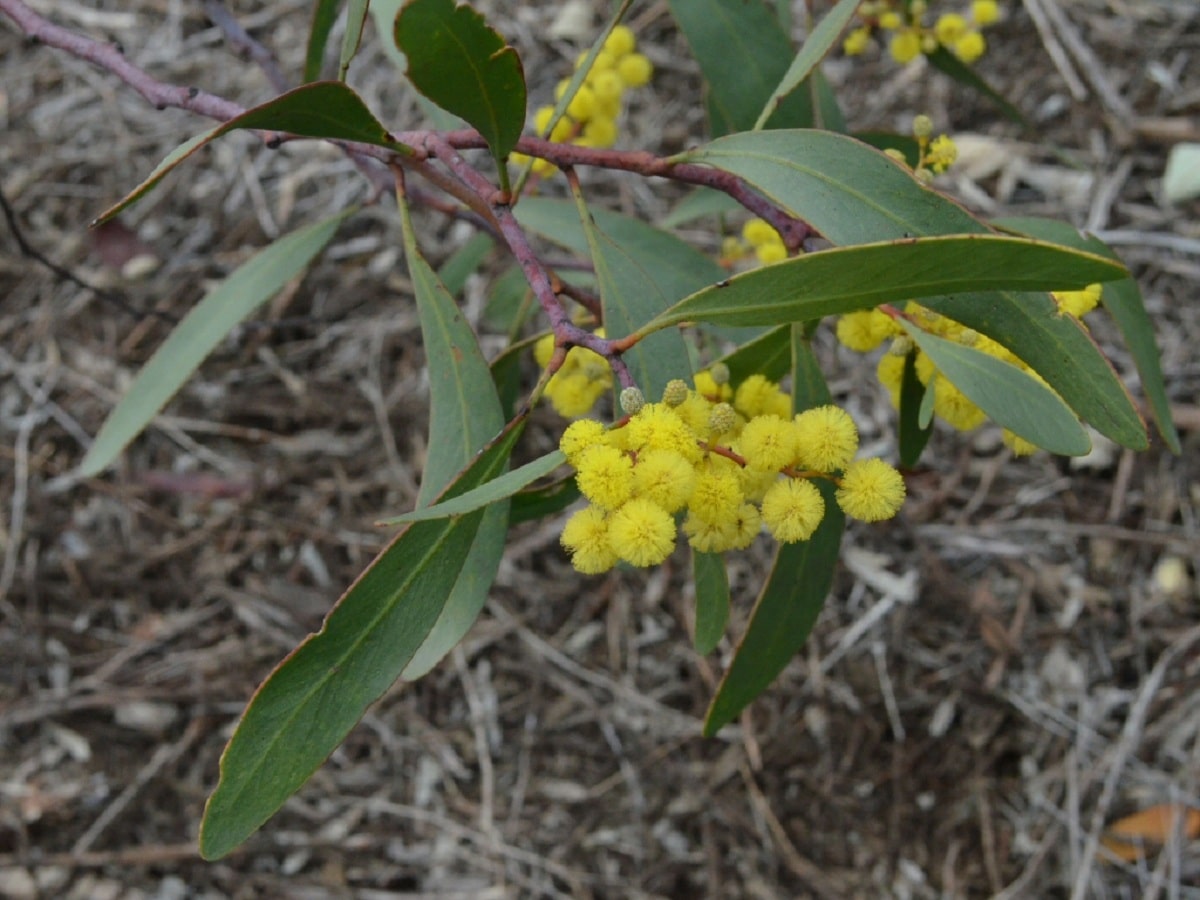
Today we are going to talk about a type of plant that is well known and used for its beautiful flowers. It's about the Acacia pycnantha. It is commonly known by the name of golden wattle and was named as the national flower of Australia from the year 1988. It is a plant that belongs to the Fabaceae family and is native to the southeastern part of Australia. Due to its introduction in other countries, it can be found in some regions of southern Europe and distributed in South Africa. In these places where it has been introduced, it has become an invasive plant.
Therefore, we are going to dedicate this article to tell you all the characteristics, properties and care of the Acacia pycnantha.
Key features
The name of this plant comes from the Greek pines that are the ones that form the thick groups of flowers that form trees. By entering other countries where it is not native, it has acquired certain characteristics of an invasive plant. In order to control the populations, different methods will be used and to be able to avoid the proliferation of this plant.
La Acacia pycnantha blooms when the winter season ends and temperatures start to get higher. At the beginning of summer is when it begins to produce a large number of flowers with a golden color. The remarkable characteristic of these flowers is that they have an exquisite fragrance that is quite soft to the touch and followed by long pods containing shiny black seeds. It is a small plant in a matter of size, since some specimens can only reach 10 meters in height. In some places in Morocco it has been possible to observe some specimens of Acacia pycnantha that reach 12 meters in height.
The bark is smooth in young plants and a color ranging from dark brown to gray. in other specimens with greater development. One of the characteristics by which we can differentiate older specimens is the more beautiful texture they acquire over time. It has small branches with a smooth texture that can sometimes be covered by white flowers.
Distribution area and habitat of the Acacia pycnantha
As we mentioned at the beginning of the article, the Acacia pycnantha It is a plant native to South Australia. However, it has been distributed in other areas of the world. In its place of origin it was to be distributed even in the most arid regions of the northwest as well as in coastal areas of central and southern New Wales. They can also be found in areas such as regions such as Sydney and the Blue Mountains.
Other areas where it has its area of distribution is in India and Morocco. In these regions there are some studies in which it is suspected that the invasive power of this species can displace the Acacia cyanophylla due to its high tannin content. It is a fairly resistant plant and therefore has this invasive aspect. Habitat mainly in areas where there is a land mainly with siliceous and stony sands.
Among the capabilities of this plant to become an invasive plant on a large scale is its high resistance to drought. It can thrive in areas with low rainfall and without any type of irrigation. It can also withstand temperature variations ranging from very cold to very hot and even excessively dry.
Reproduction of the Acacia pycnantha
We are going to see what type of reproduction this plant has that is responsible for its invasive power. Due to its characteristics, it is a plant that reproduces through its seeds. For its resistance to unfavorable soil conditions it can be recognized as a pyrophyte plant. This means that it is a plant whose growth can occur in areas that have been devastated by fire. The seeds that have been spread for many years are stimulated by the high temperatures of the fire and allow them to reproduce without any risk.
And it is that these pyrophytic plants have an advantage over others and that is that when they grow, environmental conditions are not usually favorable for others. This is why they can grow without so much competition. They are completely adaptable plants to this type of burning soil.
Care and uses
Given the rusticity and ability of this plant to develop in soils with stony characteristics and its resistance to drought, it is a plant that does not require much care for its growth. It can tolerate different types of soil and is resistant to droughts quite well. This means that it only needs to be watered moderately throughout the year. If you want it to be part of a garden, You only have to fertilize once a year using compost or common manure. It is also advisable to prune during the end of the flowering season. In this way, pruning helps control growth and can be given the rounded shape we want.
One of the aspects to take into account in order not to destroy this plant is that it does not tolerate puddles. Since it is a species that prefers more drought, the planting area must be very well drained. It is also important to place the Acacia pycnantha in a place where it has direct sun exposure so that it does not adversely affect its normal growth. Although it is a very resistant plant, it can also be attacked by diseases and pests.
Regarding the uses of the Acacia pycnantha, we see that it is a plant that has great beauty in its flowers. Therefore, among its main uses is the ornamental. Other benefits that this species can have for its flowers is that it has a great, very pleasant fruity aroma. It has been used on numerous occasions to make flavorings. In addition, thanks to the colorful yellow foliage it is also taken into account to be used as an ornament for farms, gardens, squares and parks.
From the bark, a sap-like substance called tannin can be extracted from which the skin tissue of animals for domestic use and some medicines is made.
I hope that with this information you can learn more about the Acacia pycnantha and their characteristics.


